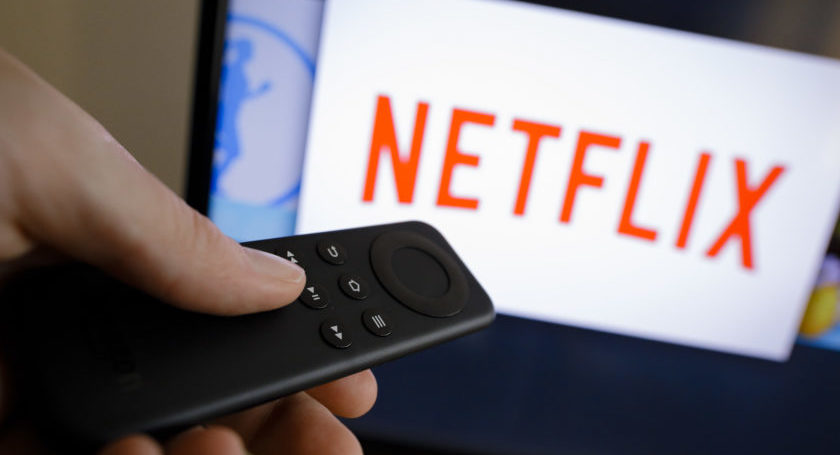M+E Connections

Analyst: Reasons for Optimism About Netflix Despite Q2 Subscriber Miss
Story Highlights
There’s plenty of reasons to be upbeat about Netflix despite the company reporting weaker-than-expected subscriber additions in its second quarter (ended June 30), according to Jeffrey Wlodarczak, an analyst at Pivotal Research Group.
Total paid memberships grew by 2.7 million globally – less than the 5.5 million Netflix added in Q2 last year and its 5 million forecast for the quarter this year, the company said July 17 in its quarterly letter to shareholders.
U.S. streaming paid subscribers decreased to 60.2 million from 55.96 million a year ago, while streaming paid subscribers in other markets increased to 91.46 million from 68.39 million.
The missed forecast was “across all regions, but slightly more so in regions with price increases,” Netflix said in the letter, adding: “We don’t believe competition was a factor since there wasn’t a material change in the competitive landscape during Q2, and competitive intensity and our penetration is varied across regions.”
Netflix thinks Q2’s content slate drove less growth in paid net additions than anticipated, it said. Also, Q1 was so large for it, with a whopping 9.6 million net adds, that “there may have been more pull-forward effect than we realized,” the company said.
Regardless, “let’s not make a mountain out of a molehill,” Wlodarczak said in his research note. After all, the “healthy price increases drove overall better than expected financial results in 2Q and guidance for 3Q,” he said.
Q2 revenue jumped 26% from a year ago, to $4.9 billion, Netflix said. “That increased revenue is very good for our business and ultimately for our members because we reinvest the bulk of that back into great content and great product experience for our members,” Netflix CFO Spencer Neumann said on the company’s quarterly recorded earnings video.
“Importantly, a clearly strong 3Q programming slate and the disappearance of price hike related churn in 3Q drove NFLX’s reasonable forecast for a major (much better than expected) rebound in subscriber growth” in the second half of this year, Wlodarczak said.
Netflix expects to grow paid memberships by 7 million in the third quarter, the company said. That would be more than the 6.1 million it reported for Q3 last year.
The company is also “making good progress with our original films portfolio with more and more of our films creating larger audiences” than its pay licensed movies, the company said in its letter.
As Netflix gains scale, Wlodarczak expects “further material price increases,” along with “still substantial increases in subscriber totals and eventually a rapid expansion” in profitability, he said.
But Netflix faces several risks, the analyst conceded. For example, “any subscriber miss is likely to drive very large volatility,” he said. In addition, large media companies are “trying to consolidate to put themselves in a better position to compete” with Netflix and “potentially make it more difficult to secure content,” he said. Additional risks include increased competition, he said.
The company has been “moving our content from semi-exclusive catalog and 2nd-window unbranded content to branded exclusive 1st window original content for many years,” Netflix also said in its letter, adding: “Much of our domestic, and eventually global, Disney catalog, as well as Friends, The Office, and some other licensed content will wind down over the coming years, freeing up budget for more original content.”
As part of a new partnership with AT&T in the U.S., Netflix is being implemented into AT&T’s new set-top box, the company also said in the letter.
“After several months of testing,” meanwhile, Netflix decided to roll out a lower-priced mobile-screen plan in India to complement its existing plans,” Netflix said, adding: “We believe this plan, which will launch in Q3, will be an effective way to introduce a larger number of people in India to Netflix and to further expand our business in a market where Pay TV ARPU is low (below $5). We will continue to learn more after launch of this plan.”
Other analysts, however, offered a more cautious take in research notes July 18.
“Netflix has already penetrated the majority of its above median income household addressable market at 60 million subscribers, and with competition from Disney+, HBO Max and Comcast, we expect the company to have difficulty meaningfully growing its domestic subscriber base,” Wedbush Securities analyst Michael Pachter said.
Meanwhile, the acknowledgement by Netflix executives that the recent price increase hurt subscriber growth in the quarter “brings into question Netflix’s ultimate pricing power,” MoffettNathanson analyst Michael Nathanson argued. “As more studios pull content from Netflix, the platform moves from being a digital video store in the cloud with unlimited versions of all your favorite shows to a premium cable network on steroids,” he said.
He also questioned what Netflix’s acknowledgment that its Q2 content slate drove less growth than expected meant about “both long-term content and marketing spending, especially as new competition begins to ramp” late this year. He added: “Will Netflix always need to spend on original content and promotion to hold subscribers in the increasingly competitive U.S.? We think so.”









